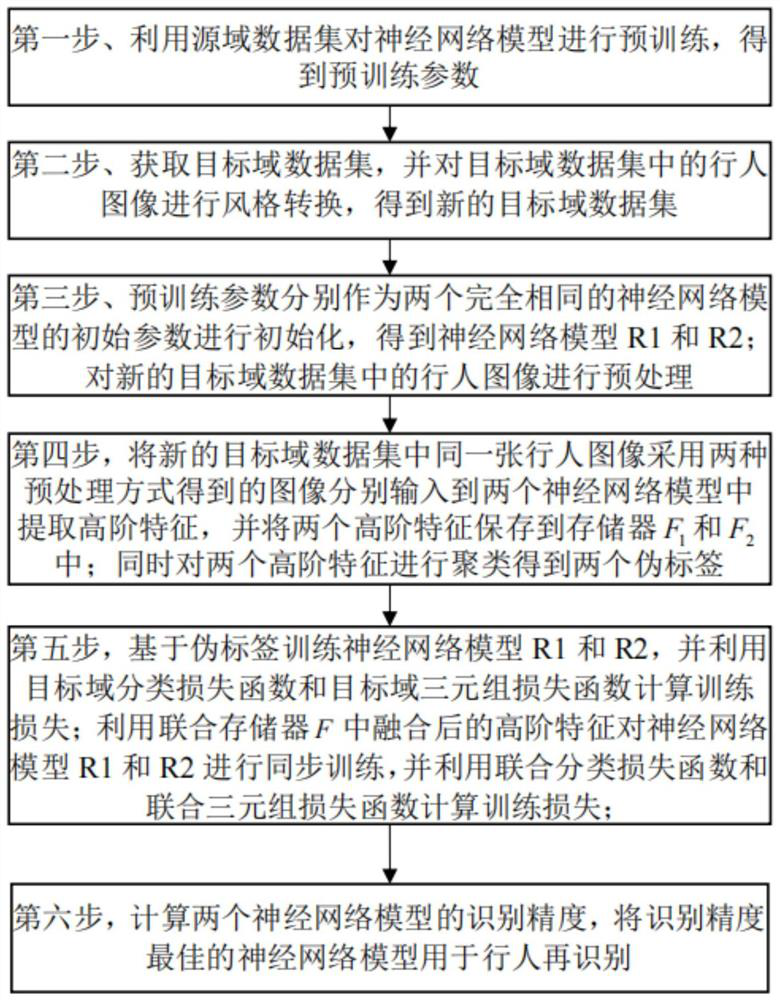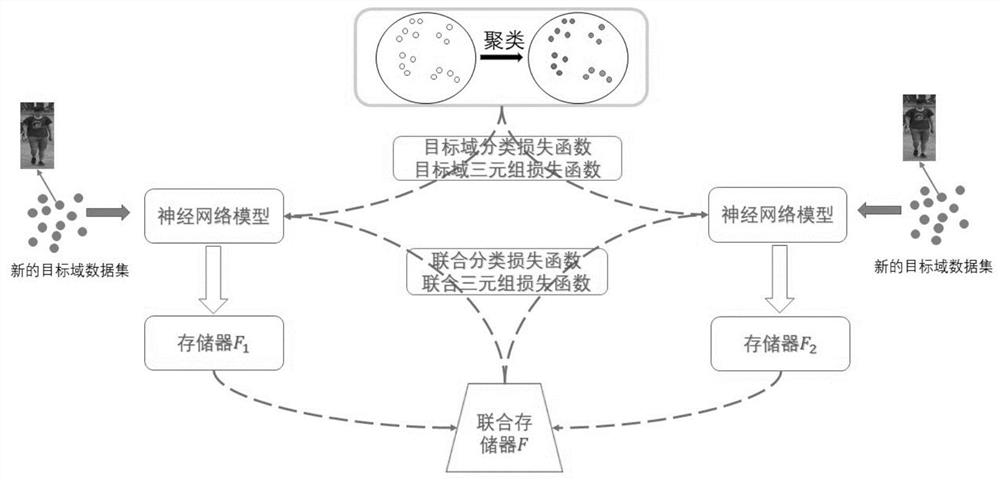Domain adaptive pedestrian re-identification method based on style conversion and joint learning network
A pedestrian re-identification and learning network technology, applied in the field of image data processing in computer vision, can solve problems such as clustering noise expansion, and achieve the effect of narrowing the distribution gap
- Summary
- Abstract
- Description
- Claims
- Application Information
AI Technical Summary
Problems solved by technology
Method used
Image
Examples
Embodiment Construction
[0052] The technical solutions of the present invention will be further described in detail below in conjunction with specific embodiments and drawings, but this does not limit the protection scope of the present application.
[0053] The present invention is a domain-adaptive pedestrian re-identification method based on style conversion and joint learning network (method for short, see Figure 1-2 ),Specific steps are as follows:
[0054] The first step is to use the source domain data set to pre-train the neural network model to obtain pre-training parameters;
[0055] In this embodiment, the DukeMTMC-ReID data set is selected as the source domain data set, and each pedestrian image in the source domain data set is extracted through a neural network model, and the identity prediction of the pedestrian image is finally output; the source domain cross-entropy loss function and Source domain triplet loss function to optimize the pre-training parameters of the neural network mo...
PUM
 Login to View More
Login to View More Abstract
Description
Claims
Application Information
 Login to View More
Login to View More - R&D
- Intellectual Property
- Life Sciences
- Materials
- Tech Scout
- Unparalleled Data Quality
- Higher Quality Content
- 60% Fewer Hallucinations
Browse by: Latest US Patents, China's latest patents, Technical Efficacy Thesaurus, Application Domain, Technology Topic, Popular Technical Reports.
© 2025 PatSnap. All rights reserved.Legal|Privacy policy|Modern Slavery Act Transparency Statement|Sitemap|About US| Contact US: help@patsnap.com



